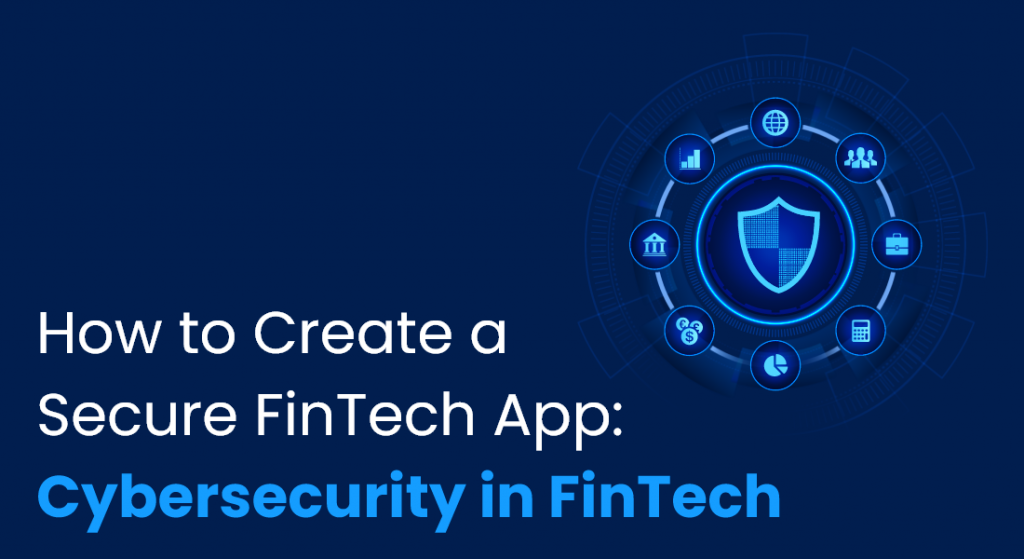Cyberattacks on the fintech industry have effects beyond financial loss, such as violations of compliance regulations or a decline in client trust.
Financial service companies also have a duty to safeguard the data of their consumers in addition to their money. Attackers usually target cybersecurity in fintech firms because of their desire for financial gain at the same time.
What therefore can fintech businesses do to shield their operations from the effects of the upcoming cyberattack? To comprehend the significance of a proactive cybersecurity approach, let’s take a deeper look.
Since the advent of Financial Technology businesses or fintech, the cybersecurity environment in banking has altered. The growing usage of end-to-end user systems, electronic payments, mobile transfers, and cryptocurrency trading by fintech businesses increases efficiency but also poses serious security issues.
Find out by reading on.

Numerous well-known Fintech businesses struggle with a variety of problems, including protracted funding cycles, unmet goals, and rising losses. These problems are also extremely prevalent, I suppose. And these occur as a result of improper leadership lifecycle management.
The fintech sector does, however, confront several more significant difficulties every day.
Data protection has become one of the most important challenges in the internet world, regardless of whether it relates to mobile banking, payment applications, or Fintech in general. We all know that traditional banking institutions have huge bulletproof doors, CCTVs, security guards, and vaults to keep their data safe and secure.
Users may be more affected by vulnerabilities since not only their money but also their personal data is at risk, which makes them much more covert and perhaps more damaging.
Solution
The assistance of a Fintech app development business will help you create a high-level security app. The following elements might be included in the app to increase security:
Some banks or financial organizations in the cybersecurity in fintech sector lack adequate or practical mobile banking capabilities. Although some banks attempt to mimic websites, nobody would choose a mobile application in today’s digital environment. Every user seeks a simple and practical alternative.
Therefore, a lack of finance mobile app development experience leads to unfriendly applications that don’t make the best use of mobile devices. These characteristics and technology enable a fintech bank to provide great customer experiences.
Solution
Accenture reports that 79% of bankers globally and 82% of US bankers believe AI will transform the way banks collect data and communicate with clients.
Big data and AI, as we all know, have an effect on every firm. Organizations can gather personal data about consumers, from social status to financial conduct, habits, and in-app activity, using big data.
For banks, this information is crucial, especially when it comes to providing high-risk banking services and credit ratings. Big data enables AI to fully automate the process of identifying fraud, doing a risk analysis, and efficiently managing transactions.
Solution
Machine learning will be used to teach AI in order to mix it with huge data. To train your system for this, you will need a lot of data. The majority of banking apps can’t parse and fetch several different data sets. Therefore, by using a one-shot learning model that enables you to train your machine learning system on fewer quantities of data, you may tackle this problem.
There are numerous fintech applications that include blockchain technology.
By utilizing a blockchain, you can increase the credibility of the Fintech sector. Because it enables you to monitor and analyze each stage of a transaction and stop any modifications from occurring so that you can always keep an eye on it.
Solution
As is well known, integrating blockchain technology is difficult. Make sure you follow all rules and laws set forth by the government when you put this into practice. Additionally, stay away from any limits placed on your mobile services by the government since they are still unwilling to permit widespread blockchain implementation.
User experience and retention are two of the top problems for the fintech industry. For instance, you should provide a mobile banking solution that is neither too difficult to use nor easy to break.
Solution
Making sure the UI/UX component of cybersecurity in fintech software is safe and user-friendly is essential. Users are also prepared to utilize two-factor authentication to access an app. However, having to repeatedly enter their login information may irritate them.
You can also research your rivals and see what methods they employ to provide a flawless customer experience.
While internal security teams are crucial for many fintech companies, there are several advantages to utilizing the skills of an outside testing team. For instance, while cybersecurity evolves constantly, new ideas and advice from outside specialists might benefit your internal team.
Furthermore, the expanded size that external teams provide benefits a lot of expanding businesses. For many large firms and quickly expanding businesses, adding a scalable testing solution to your internal personnel proves to be invaluable.
Finally, teams can become more efficient by becoming familiar with the platform thanks to centralized pentesting activities. Reviewing legacy pentest data can help identify areas where existing operations and processes might be improved. Working with a dependable partner to provide this platform allays concerns about the centralized data’s vulnerabilities, especially when the provider of the pentest platform has followed the correct compliance standards and put in place the required security measures.
Securing any fintech product requires a strong security engineer. Establishing a DevSecOps team, made up of engineers with strong hard and soft skills, is another way to increase security. Software developed by a DevSecOps team will be secure by design with relative ease.
It is the best strategy for cybersecurity in fintech for businesses wanting to innovate in areas that banks find more difficult to solve while yet meeting strong security standards. For more information about Cybersecurity follow Devtechtoday